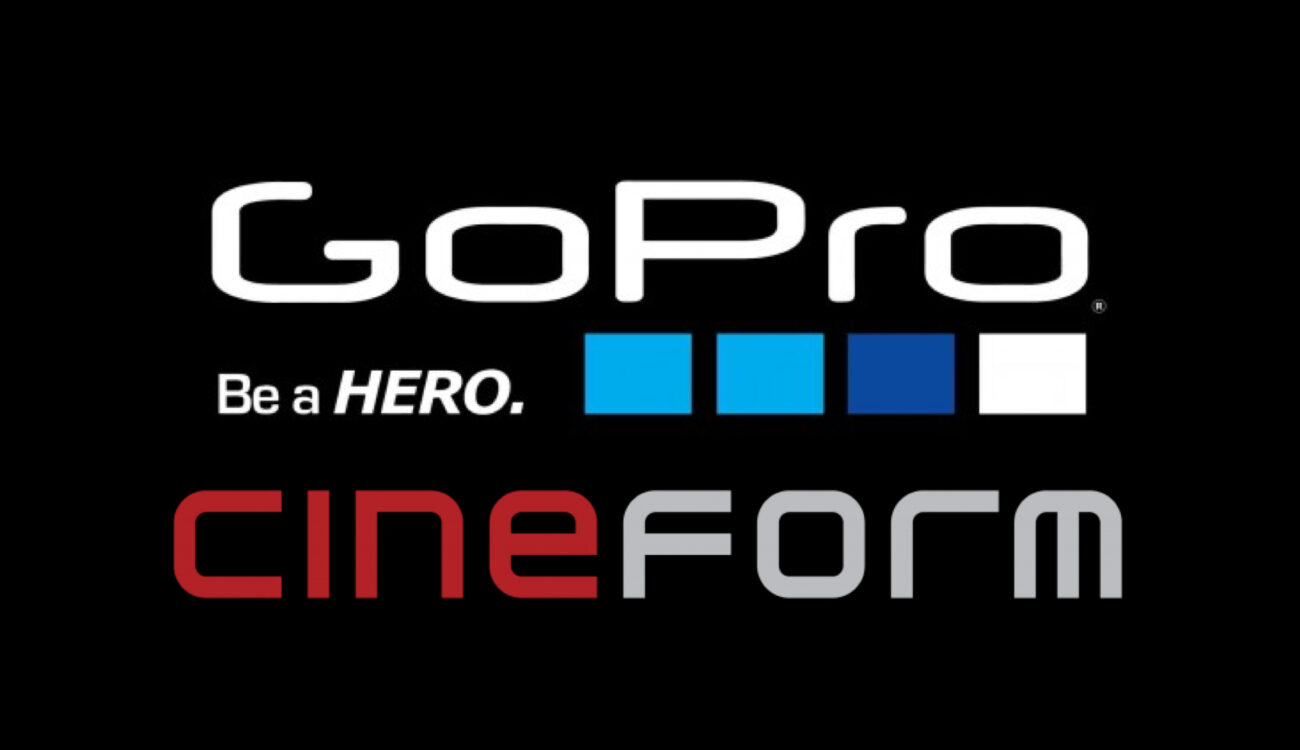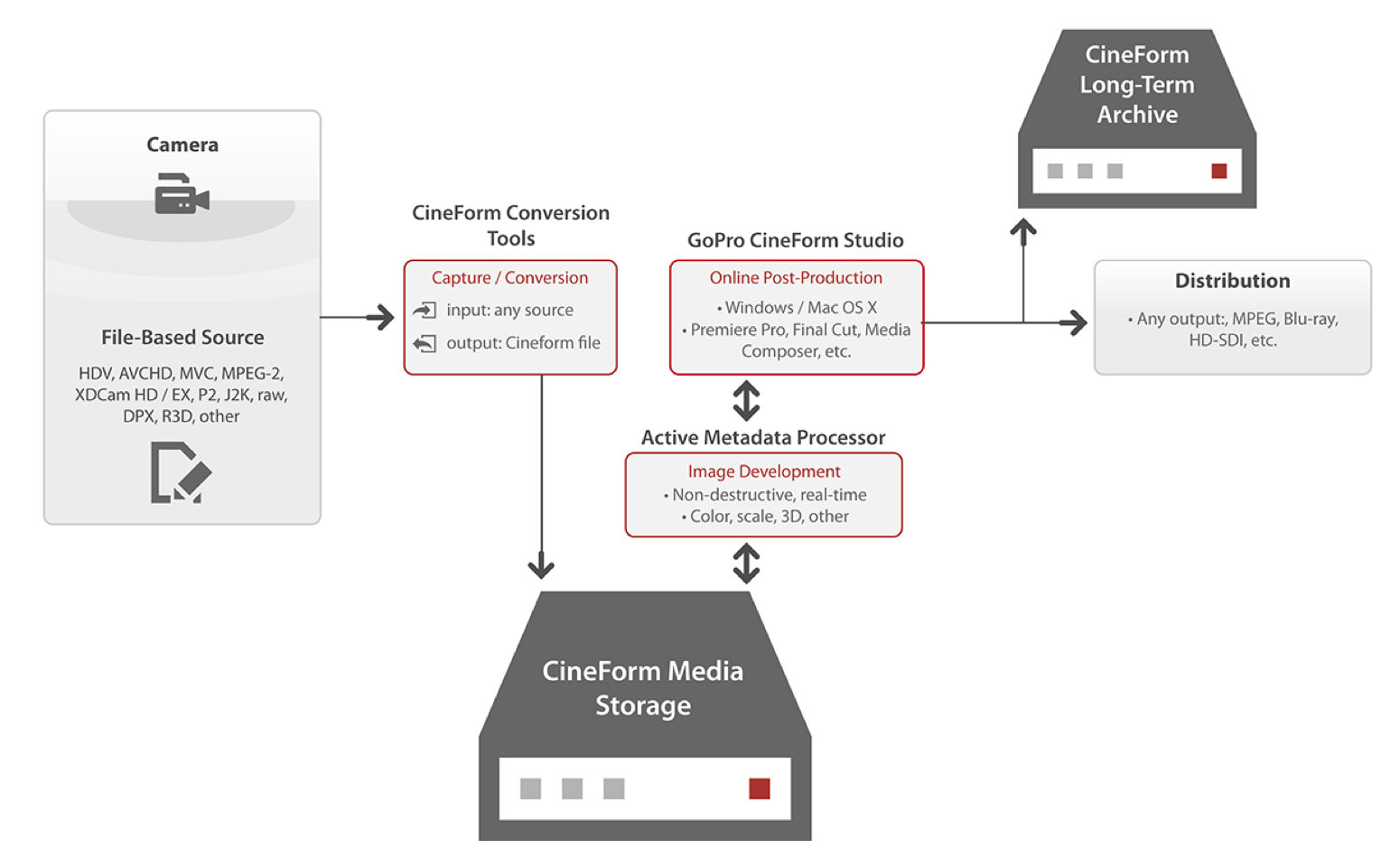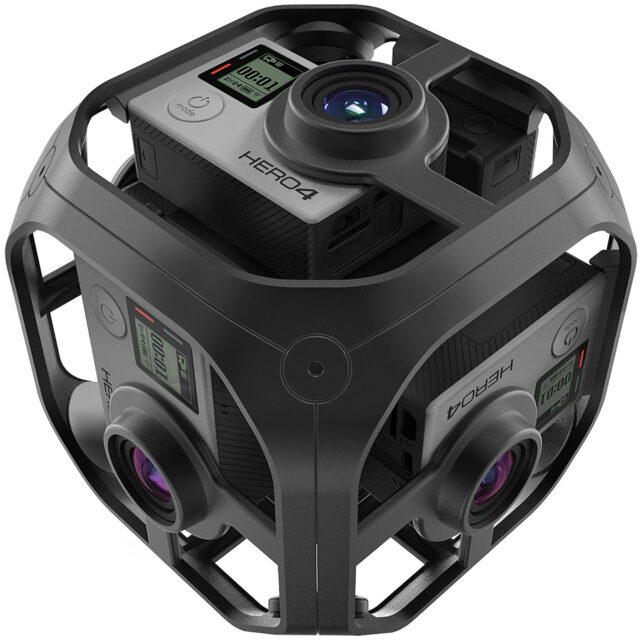
In the age of the unstoppable rise in resolution and thus in video data rate, GoPro has unleashed CineForm – its most efficient codec yet – to the public.
CineForm is a video codec originally designed in 2002 and developed for CineForm Inc. by David Taylor, David Newman and Brian Schunck. It became the first “visually lossless”, non-proxy intermediate codec that replaced the source with a new, much faster file. On March 30th 2011, the company was acquired by GoPro with the intentions to use its codec in the 3D HERO System.
CineForm was one of the first codecs to offer significant compression that balanced quality, speed and performance, even more than Avid DNxHD and Apple ProRes which arrived later. From a technological point of view, its better performance over ProRes and DNxHD is due to its better compression methods (Full frame wavelet comparing to DCT). Without getting too geeky here, it means one can compress more with fewer artifacts.
In 2015, CineForm made a major breakthrough, as the codec was standardized by the Society of Motion Picture and Television Engineers® (SMPTE®) as the new open standard for video acquisition and post production. In the press release, GoPro mentioned that CineForm had been used in several major movies, including Slumdog Millionaire and Need For Speed.
Here are the main features of this codec:
- Full frame (no blocks) Wavelet compression for highest image integrity.
- Unrestricted spatial resolution (4K and beyond).
- Up to 12-bit arithmetic precision.
- RGBA, RGB, YUV, and RAW chroma formats.
- Standard wrapper interfaces, including .AVI and .MOV for broadest compatibility (Final Cut Pro, Premiere Pro, After Effects, etc.).
According to GoPro, CineForm is crucial for high-resolution products like Omni, which needs a super-codec with the ability to compress a high amount of video data without impairing quality.
Now that video data rates like 8K and 360 imaging are becoming more and more common, GoPro has decided to improve the codec by enabling access to the code, making its programming open source and releasing its SDK (Software Development Kit) on GitHub for improvements, demoing and educational purposes.
As stated by GoPro:
Since it is so clearly evident that CineForm is crucial to advancing 360° imaging, GoPro is open-sourcing it to help third-party software developers accelerate high-resolution 360 and future workflows. Eventually, video standards will be the road in which high-resolution consumer 360 cameras will run, but today, where we’re going… We don’t need roads”
What do you think is more preferable for the filmmaking community: a closed-shop codec like ProRes, or an open source like CineForm? Tell us your opinion in the comments below.




























